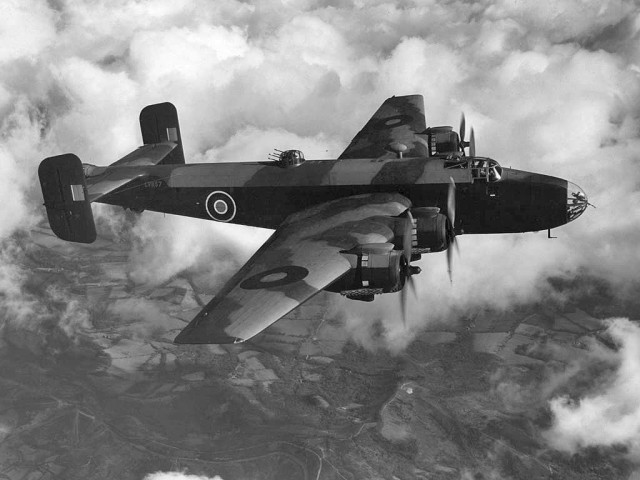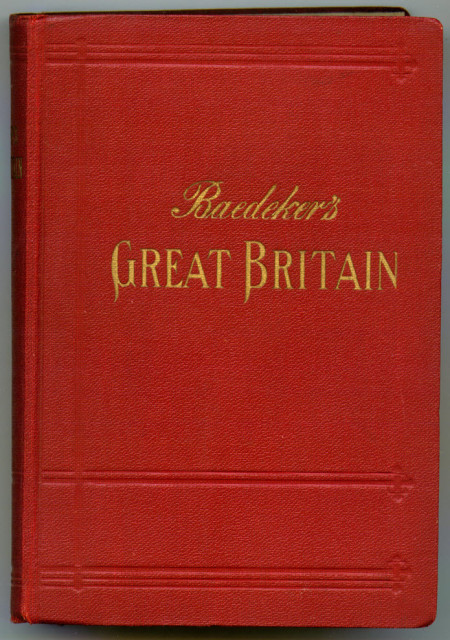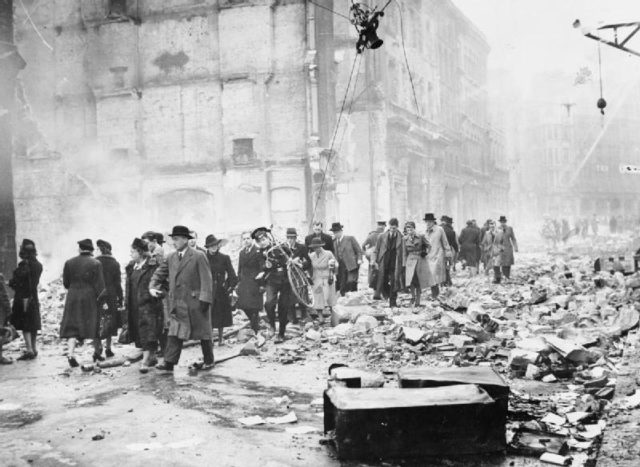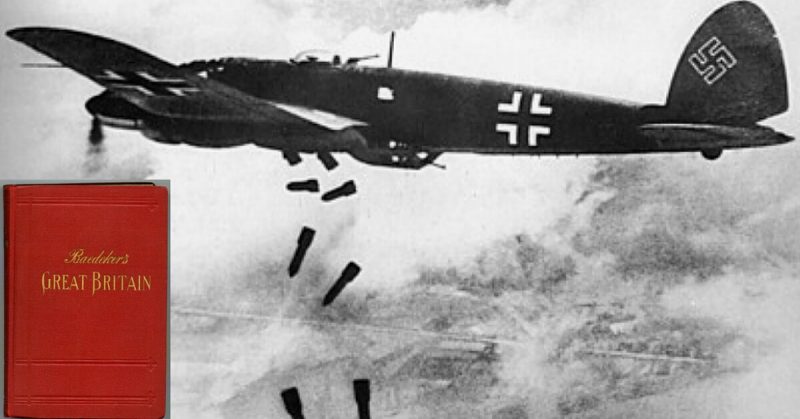As the fighting grew between the British and German forces in the midst of WWII, and overnight raids and bombings were getting out of control, the culture and history of some of Europe’s finest cities really took the greatest beating.
Architectural masterpieces were exposed to a constant barrage of military force, leaving a wave of destruction in its wake. Historic sites and monuments were demolished or defaced, and some of the oldest relics of times past had all but crumbled under the devastating effects of war.
An example of these attacks are the German Baedeker raids, otherwise known as the “Baedeker Blitz.” The term Baedeker was a reference to the popular travel guides of the time, signaling their intent to destroy the touristy, arts and cultural – not to mention civilian – districts first, in an effort to weaken the Brits at the heart of their most beloved cities.
This indiscriminate tactic was set in motion by the German Luftwaffe, in retaliation for the British Royal Air Force’s (RAF) consistent bombing of some of Germany’s most historic cities beforehand. The Luftwaffe’s act of revenge for that excessive force brought chaos, so that by the end, each country and its people were forced to experience the utmost grief and devastation of the deadly bombings imaginable.

How Both Sides Escalated Their Warfare
By the beginning of the year 1942, both the German and British bombing campaigns had all but come to a standstill. Nightly attacks from the German offensive had slowed to a crawl since May 1941, after having already conducted multiple blitz attacks on English soil for months. As the war continued to shift gears over time, the Luftwaffe decided at this point that their resources would be best suited for trying to plan an invasion of the Soviet Union.
Meanwhile, at this time, the RAF’s initial offensive movements weren’t getting the desired effect, and they needed an overhaul of their strategy to really gain the traction they were looking for. Therefore, the British chose to stand down as well until a greater plan could be devised to make more headway for their side. So, come Christmas 1941, both sides had more or less stepped down to rethink their motives.
And this time, to reorganize and recover really gave the RAF the time they needed to plan a master strike. By March 1942, the British offensive bombed the city of Lubeck, changing the game for both sides entirely.
For the RAF, this charge at the Germans showed their newfound tactics to be worthwhile. Newly-designed bombers like the Halifax, the Sterling, and the Manchester all proved very useful in creating a shift in the military dynamic. And along with new leadership and improved navigation, this gave the RAF the edge they were hoping for in carrying out a debilitating move on the Luftwaffe.

Most importantly, their area bombing plans had switched. More civilian and cultural areas were hit first, as opposed to government buildings and utility stations that had earlier made less of an impact.
The German leadership’s reaction to this new, targeted assault was one of shock and absolute anger, resulting in the start of the Baedeker raids.
The Luftwaffe Make Their Move

From the end of April 1942 through to the end of May, the Luftwaffe offensive raids were carried out constantly, all across England’s vast countryside. It was stated that each raid would involve the use of some 30-40 aircraft, but this number actually elevated to almost 70 in each of the last few assaults. Every new blitz on a new city would last between 60-90 minutes each, with a few hours between each attack, to really drive home just how intent the Luftwaffe were in making the RAF and British civilians suffer for their previous actions against them.
The raids began in Exeter on April 23-24, taking the first few hits of the mission. Over the course of the month-long attack period, the Germans would end up bombing Bath, Norwich, York, and Cowes. The Luftwaffe would even return to each of these cities once or twice more, ready to annihilate anything they may have missed the first time. Before long, they also bombed the port of Hull, a large military hub in England that struck quite a blow to the RAF.
After hitting their last target, the city of Canterbury, at the end of May, the death toll and immense destruction of these English cities was enormous. After the Baedeker raids, over 1,600 civilians were killed, almost 1,800 were injured, and about 50,000 homes were absolutely obliterated by the strength and power of the Luftwaffe’s aggressive force.
Thankfully, many of the oldest cathedrals in Norwich, Exeter and Canterbury were spared from harm, saving some architectural history from the destruction of war. But there’s no denying that the German bombardment of major cultural centers dealt a heavy blow to the English country and its people, both physically and emotionally.
The Aftermath of a Brutal Assault
Despite the Baedeker raids generally referring to the major attacks on the mentioned five English cities during this month-long trial, the Luftwaffe hardly stopped the battle there. Over the next two years after the initial bombings, the German offensive continued to lay siege to any ‘Baedeker’ centers of cultural value worth anything to the English people.

However, due to the RAF’s retaliation after these raids as well, the German casualties began to build up too, leaving the Luftwaffe with less aircraft and resources to manage the same kinds of massive targeted assaults they started with that April. Both sides carried out more of the same warfare over the next few days, and the body count only continued to rise.
By 1944, however, the baedeker raids slowed to a crawl before finally being put to an end altogether. The Germans had lost a majority of their resources, and the RAF only continued to grow stronger. The Luftwaffe decided that there were failings and they began to see larger losses than any fruitful gains and that ending the bombings would be their best move. At this point, they made the decision to place their efforts elsewhere, ending the terror of constant bombings and raids upon the civilians of England.
However, the aftermath was only beginning , and each country was forced to try and muster the strength to rebuild for years to come.
